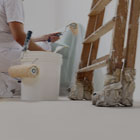-
AllAnytime Fitness Gym Art Beer Of The Week Blog Bus Fares Bus Service Business Business Expo C2C Care Care Home Charity Children Christmas Cinema City Status Cliffs Pavilion Cliffs Pavilion Review Cocktail Recipes College Community Competition Construction Coronation Coronavirus Dannielle Emery Design Easter Education Electoral changes Leigh on sea Emma Smith Employment Emsella Chair Environment Essex & Suffolk Water News Essex Police Essex Wildlife Trust News Events Family Fun Fashion Festival Film Finance Fitness Food Food & Drink Football Foulness Bike Ride Fresh Face Pillow Company Gardening General Election Hair & Beauty Halloween Harp Havens Havens Hospice Havens Hospices Havens Hospices Health & Fitness Health & Beauty Health & Fitness Healthwatch Southend Historicaleigh History Holidays Housing Indian Indirock Jubilee Karen Harvey Conran Kids Kids Blogs Kids Competitions Kids Reviews Lazydays Festival Legal Legal Eagle Leigh Art Trail Leigh Folk Festival Leigh Library Leigh On Sea Finds Leigh Road Leigh Town Council Leigh Town Council Press Release Leigh on Sea Leigh on Sea Sounds Leigh on sea Folk Festival Leigh on sea Marathon Leigh on sea Town Council Leigh on sea man breaks marathon record Leigh on sea news Lifestyle Livewell Southend Press Release LoS Shop London London Southend Airport Los Shop Marathon Melinda Giles Mortgage Angel blog Mortgages Motherofalloutings Mughal Dynasty Music My Mortgage Angel MyLoS NHS News News Newsletter Offers Outfit Of The Week Palace Theatre Parenting Parking Pets Picture Of The Week Pier Politics Press Release Press Release Southend City Council Professional Property Property Of The Week RSPCA Ray Morgan Re:loved Recipes Recycling Restaurant Restaurant Review Restaurants Review Roads Rotary Club Royal Hotel Royal Visit SAVS Schools Seafront Shopping Shows & Music Review Shows & Music Shows & Music Review Southend Southend Airport Southend Borough Council Press Release Southend City Bid News Southend City Council Southend City Council Press Release Southend City Council Press Release Southend Community Safety Southend Hospital News Southend In Sight Southend In Sight Southend In Sight Press Release Southend on Sea Sport The Mortgage Mum The One Love Project The Ship Hotel Theatre Theatre Blog Theatre Review Theatre review Transport Travel Travel Veolia Village Green Volunteer Weddings Whats On c2c
Exercise For Active Labour

Exercise For Active Labour
Last week, new research revealed the benefits of exercise for the expectant mother, and their children and my blog was about exercising with your Buggy and your baby. I didn’t plan that I promise.
I am pleased that so many of few emailed in with your enquiries and especially mum to be’s, so I thought I’d dedicate this blog to you.
There is so much confusion out there about exercise in pregnancy. All the experts have the information but the general public don’t know what is best. Plus every pregnancy, mum to be and baby is different.
There are huge benefits of exercising and a healthy lifestyle for both mother and baby. By keeping active and fit, by nourishing our bodies with healthy food and by keeping our stress levels balanced, we can provide the best possible environment for a developing baby.
I taught my classes til I was 35 weeks and up until then I was mostly just bump, then when I stopped exercising I felt like I ballooned up. I carried a lot of water and had cankles. Really bad cankles. But as it was summer I was lucky I could wear flip flops and sandals. I still kept busy and was teaching dance once week up until the night before my waters broke. I even got up and joined in. When I sat down, I got a very hard kick. Turns out that was my 1st contraction. I got home, went to bed and my water’s broke at 1.30am in the morning. But as she was back to back I had an 18 hour labour, gas and air, pethidine and eventually an epidural before delivering her at 10.15pm.
Birth plans are great but you need to be adaptable. Here are some tips on how to prepare you for labour so you can enjoy it the way you want to as much as possible.
Exercise To Prepare You For An Active Labour
Preparation for an active labour should start during pregnancy. By practicing these specific and appropriate exercises you will be more able to stay mobile, to choose different birth positions, work with your body and find strength in your own reserves to cope with the challenge that labour can be
Strong Legs For Stamina& Strength
Strong legs will give you the stamina and strength to keep active and upright during labour. However, you will be at your heaviest and therefore the demand on your muscles will be greater at this stage. By starting to build up tone in your legs during pregnancy will help you prepare for an active. labour
Upright positions (standing, walking, kneeling, squatting - or ideally a combination of these) can help the pelvis opening expand to accommodate the baby's head as it moves down. Being upright assists the natural gravity to aid the downwards movement of your baby along the birth canal. Staying upright and mobile can also make labour pain feel less intense
Cardio Fitness For Energy Reserves
Labour is like your own personal marathon, so it's wise to boost your cardiovascular strength so you won't tire too quickly. Cardiovascular (CV) exercise increases your heart rate and breathing rate and will give you greater reserves of energy to cope with labour.
Interval Training To Prepare For Labour
Whilst you are exercising cardiovascularly (e.g power walking, swimming, X trainer, treadmill) alternate periods of interval training
- Try to push yourself to work at a harder rate for one entire minute
(keeping your exercise intensity scale to no higher than level 7) - Then reduce the intensity to an mod/easy level for 2-3 minutes
This pattern will help build your stamina and help prepare your mind set for labour. As you repeat this pattern imagine that the 'harder' level is a contraction. Focus on your breathing and picture yourself easily coping with the challenge. See that it only lasts one minute and then there is a chance to rest! Once it is over, slow the pace down to easy and picture yourself breathing slowly and deeply to help you recharge your energy
Stretches To Keep Mobile
During pregnancy your hip flexors and hamstrings can become quite tight.
The hip flexor stretch lengthens out the ileopsoas muscles, to help improve posture and pelvic alignment. The hamstring stretch releases the muscles at the back of your legs and buttock area.
These stretches will help release stiffness and constriction which can result in lower back pain. This will enable you to stay mobile during labour instead of stiffening up. Staying mobile eases pain, helps you feel in control and can aid the baby's descent in preparation for delivery. Both of these stretches are standing and can be done regularly during your labour.
Exercises For Birth Positions
Practicing positions that both strengthen key joints and release muscle tension helps you to prepare for giving birth and alternative positions you can adopt during labour.
The following exercise promotes flexibility around the hip joint by lengthening the muscles of the inner thigh. Perform this supported by cushions against a wall if this is more comfortable.
Being on all fours can be a comfortable position to adopt in labour, especially if you are experiencing lower back pain because of the position of the baby. This stretch helps to release the tension in your erector spinal muscle plus build upper body tone to help you adopt this position in labour.
Using a fitball to rest on can be helpful.
Pelvic Circles To Ease The Pain
Your body is equipped with it's own natural pain relief known as endorphins.
The pain receptors in our brain trigger the release of then to help us cope with discomfort. In pregnancy there is a profusion of endorphins around your pelvic area, and circling or rocking your pelvis stimulates the release of this natural pain relief mechanism. This movement can be particularly effective in early labour, and many women find their bodies adopting this pelvic circling automatically.
Using a fitball in labour can be helpful to rest you legs whilst staying mobile and active
Extra Help To Push
Your abdominal muscles help support the weight of your bump and are involved in stabilising the spine and pelvic tilt. Even though these muscle separate to accommodate your growing bump, it is still important to exercise them appropriately to maintain tone and condition. One of the many roles of the abdominal muscles is to aid expulsive movements such as coughing and childbirth.
Strong abs can work with the muscles of your uterus to help you push your baby out.
Breathing For Birth
Of all the exercises, this is the most vital one. By being mindful of your breath helps release tension and therefore more able to cope with stress and pain. It gives you a focus and helps you stay in control. It also revitalises you with fresh new energy.
By preparing and working with your body.
By connecting with your natural rhythm and instincts
By using the natural force of gravity and movement
By having confidence in your own body and inner strength
You are more able to enjoy an active and positive birth
Dannielle Emery #fitmumleigh
info@rewardfitness.co.uk
ADD A COMMENT
Note: If comment section is not showing please log in to Facebook in another browser tab and refresh.























